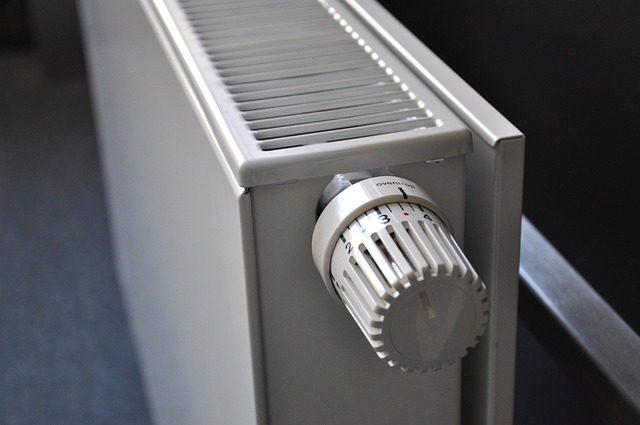Commercial air curtain heaters, with power ratings in watts, provide targeted heating for entrance ways and warehouses. Modern models feature smart controls enhancing energy efficiency. Named Entity Extraction (NEE) helps categorize products like commercial air curtain heaters, analyzing performance metrics from text data. This enables businesses to compare various types of door heating systems and select optimal solutions for warehouse or retail store climate control, promoting energy-efficient practices.
“Unraveling the intricacies of commercial air curtain heaters’ performance is now more accessible than ever. Named entity extraction (NEE) emerges as a powerful tool, revolutionizing how we interpret and compare product specifications. This article delves into the art of NEE, demonstrating its ability to highlight critical entities like capacity ratings within heater descriptions. By efficiently extracting and organizing data, businesses can streamline decision-making processes, ensuring they choose the right commercial air curtain heaters for their needs.”
- Understanding Commercial Air Curtain Heater Specifications
- Extracting Key Entities: Capacity and Ratings
- Analyzing Performance Metrics in Text Data
- Efficiently Organize Product Features for Comparison
- Enhancing Decision-Making with Named Entity Extraction
Understanding Commercial Air Curtain Heater Specifications

Commercial air curtain heaters are designed to provide targeted and efficient heating for various commercial applications. Understanding their specifications is crucial when selecting the right solution for specific needs, such as commercial entrance heating or warehouse entrance heating. These heaters utilize advanced air curtain technology to create a layer of heated air across doors, windows, and other openings, effectively blocking cold drafts and preventing energy loss.
Key factors in considering commercial air curtain heaters include power ratings measured in watts, which determine the heater’s capacity and heating range. Additionally, operating temperatures and control options should align with requirements for door heating systems or retail store heating. Energy efficiency is another important aspect, with many modern models incorporating smart features to optimize performance and reduce energy consumption—a benefit not only for cost savings but also for environmental considerations.
Extracting Key Entities: Capacity and Ratings

In the realm of commercial heating solutions, named entity extraction (NEE) plays a pivotal role in understanding and categorizing specific entities like commercial air curtain heaters. When it comes to extracting key information from product descriptions or specifications, NEE focuses on identifying crucial details such as capacity and ratings. By employing advanced natural language processing techniques, this technology can sift through vast amounts of data to pinpoint the essential parameters that define a commercial air curtain heater’s performance. These entities include power outputs, temperature ranges, and flow rates—all critical factors for businesses seeking effective door heating systems.
For instance, NEE can extract and categorize different types of commercial entrance heating solutions based on their capabilities and specifications. This allows companies to make informed decisions when adopting air curtain technology or industrial air barriers for their warehouses, retail stores, or other commercial spaces. Additionally, the extraction of energy-related entities highlights the growing demand for energy efficient heating options, emphasizing the role of advanced heating technologies in contributing to sustainable practices within the industrial sector.
Analyzing Performance Metrics in Text Data

Analyzing performance metrics in text data is a crucial step in understanding and comparing various aspects of commercial air curtain heaters. By extracting relevant entities such as commercial air curtain heater capacity ratings, power sources, and operational features from textual descriptions, reviews, or technical documents, we gain valuable insights into their performance capabilities. This process involves identifying key figures like wattage, heating capacity, and energy efficiency ratings to assess the overall efficiency of these heaters.
Furthermore, examining text data allows us to compare commercial entrance heating, air curtain technology, door heating systems, and their impact on different environments, including warehouses and retail stores. We can uncover trends and preferences regarding energy-efficient heating solutions, exploring how industrial air barriers and heated air curtains contribute to entrance climate control in various settings. This analysis empowers businesses to make informed decisions when selecting the most suitable commercial door heaters for their specific needs.
Efficiently Organize Product Features for Comparison

When comparing different models of commercial air curtain heaters, organizing product features is key. Start by identifying essential aspects such as capacity ratings, energy efficiency, and operating temperatures suitable for specific applications. This structured approach ensures that critical variables are easily comparable across brands.
For instance, consider the relevance of air curtain technology in door heating systems, especially for industrial settings or warehouse entrance heating. Efficient heated air curtains can significantly enhance entrance climate control while reducing energy consumption compared to traditional commercial door heaters. Thus, prioritizing features like power output and heat distribution patterns will help in selecting an optimal solution that balances performance and cost-effectiveness in retail stores or any other business environment.
Enhancing Decision-Making with Named Entity Extraction

Named entity extraction (NEE) plays a pivotal role in enhancing decision-making processes within industries, particularly when it comes to commercial air curtain heaters. By identifying and categorizing key entities such as specific models, capacity ratings, and technical features, NEE allows businesses to gain valuable insights into their heating systems. This technology enables efficient sorting and analysis of vast amounts of data related to commercial entrance heating solutions.
For instance, when evaluating different door heating systems, NEE can extract crucial information about air curtain technology, energy efficiency, and industrial air barriers. This helps in making informed choices for warehouse entrance heating or retail store heating applications. By understanding the capabilities and ratings of various commercial door heaters, businesses can optimize their operations, ensuring effective entrance climate control while promoting energy-efficient practices.
Named entity extraction (NEE) plays a pivotal role in understanding and comparing commercial air curtain heaters by extracting critical capacity ratings and performance metrics from textual data. By identifying key entities such as power outputs, heating areas, and energy efficiency standards, businesses can make informed decisions when selecting the most suitable commercial air curtain heater for their needs. This efficient organization of product features allows for enhanced decision-making processes, ensuring optimal results in terms of energy consumption, space coverage, and cost-effectiveness within the industry.






